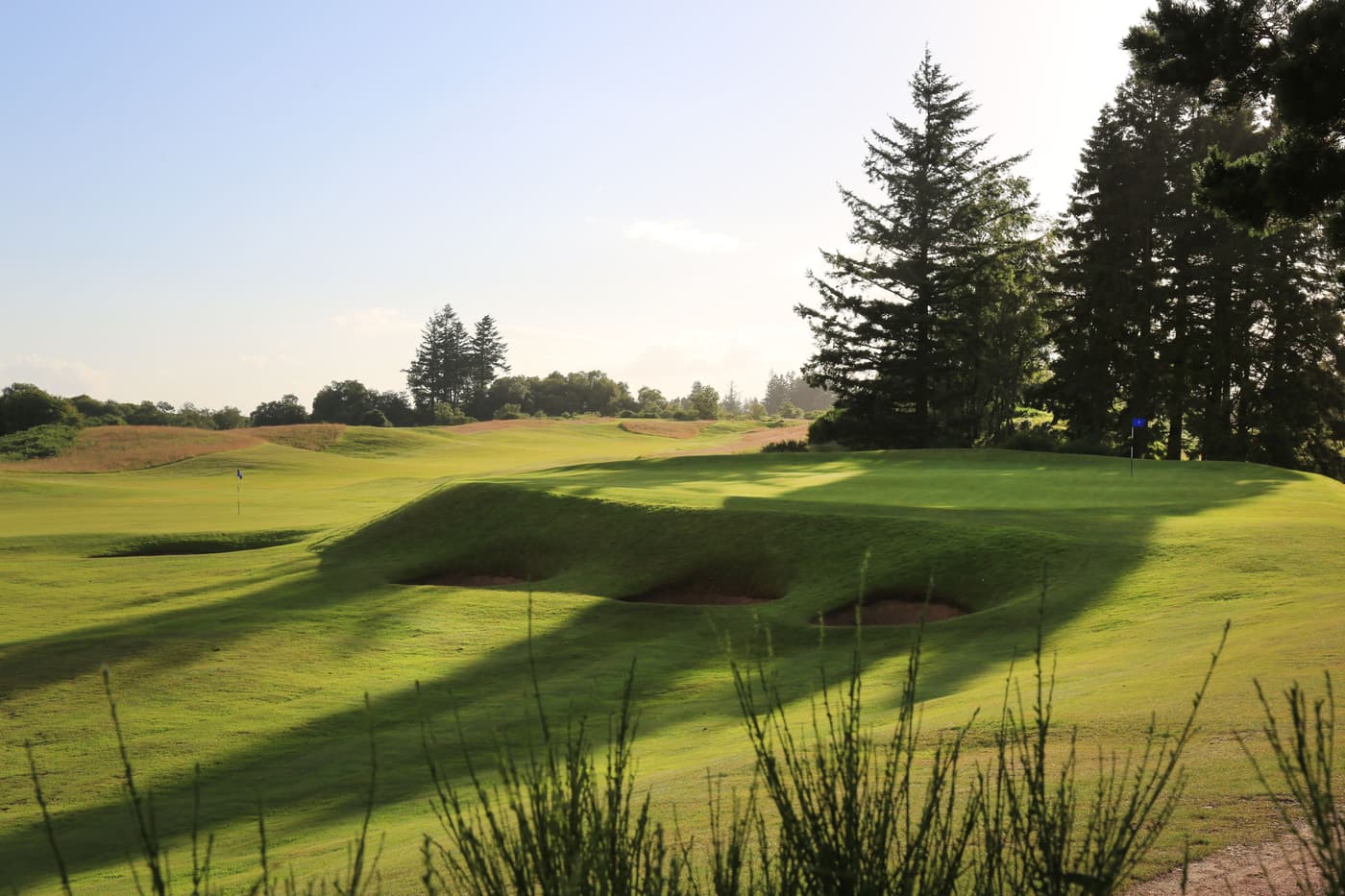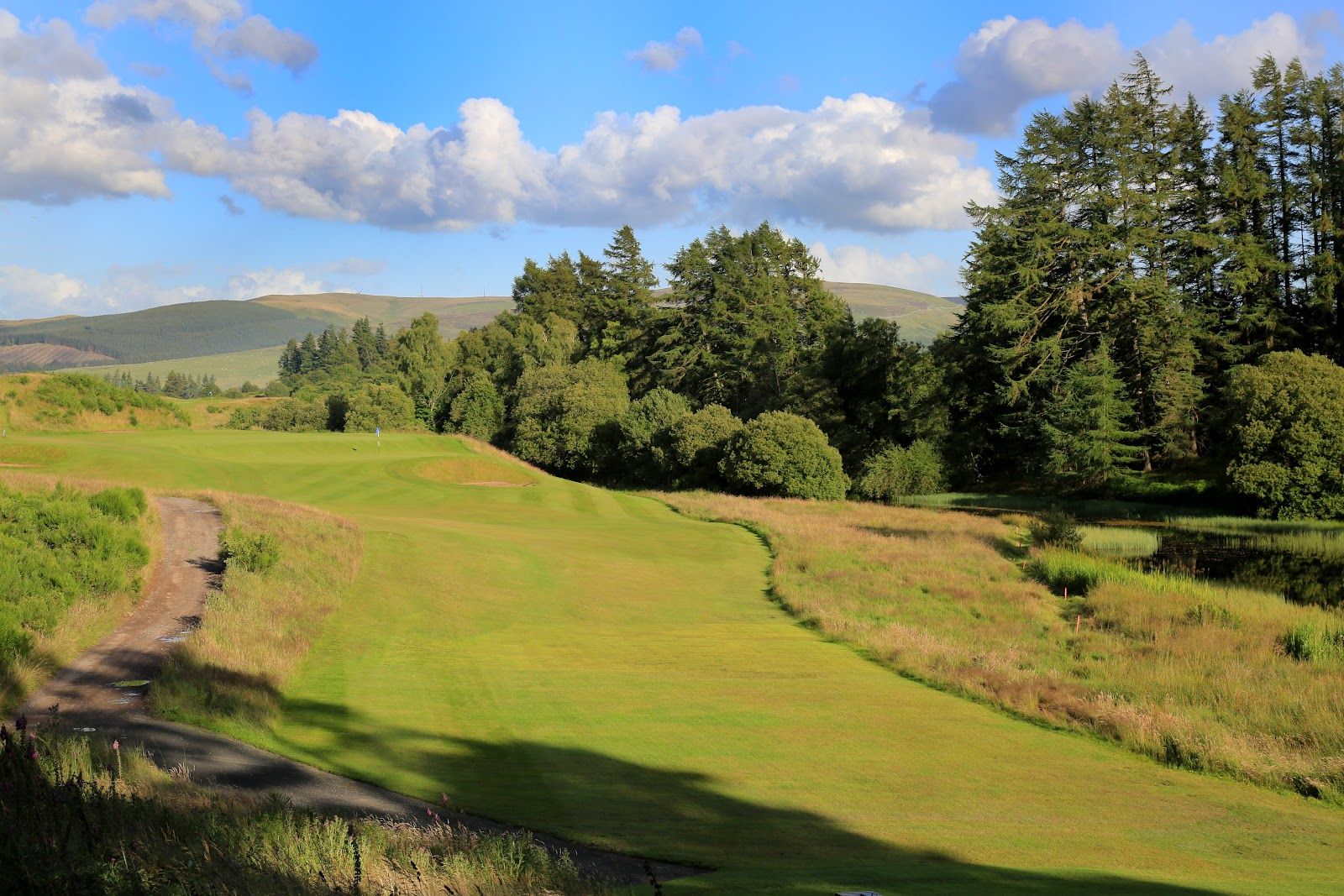
- AddressThe, Gleneagles Hotel, Auchterarder PH3 1NF, UK
The Queen’s course is the pretty little sister at Gleneagles. The holes are set within an all together softer landscape than the King’s and PGA Centenary courses. She’s only a short course and not the most challenging, but she is exquisitely delicate and stunningly beautiful. Patric Dickinson summed up Gleneagles in his book, A Round of Golf Courses: “So let us be fair from the very start; or even before the start, Gleneagles is something that was created, and exists, sheerly to please; if I may take a simile from the theatre, it is glorious musical comedy.”
Designed by James Braid and C.K. Hutchison, the Queen’s course opened for play in 1917. From the medal tees, the course measures less than 6,000 yards, but with a lowly par of 68, it represents an immensely enjoyable challenge. This is one of the finest parcels of golfing land in the British Isles. The holes weave their way across undulating moorland, through charming woodland, to greens set in pretty glades. The ball sits proudly on the springy fairways, inviting the most solid strike. The greens are true and ideal for bold putting and this really is an enchanting and exhilarating place to play golf.
Gleneagles is unusual in that it has three different golf courses and it’s also unique because it’s the only place in Scotland to have three Top 100 inland courses. This is a place to enjoy the entertainment and have some fun. Or as Patric Dickinson said: “Gleneagles is one of the wonders of the golfing world, a kind of Hanging Garden of Babylon on a Scottish hillside, and if you marry Golf, here’s the place to spend your Hinny Mune!”
Gleneagles completed a renovation programme on the Queen’s course in 2017. Eighty-nine bunkers were rebuilt to improve drainage and enhance the sand line visibility on each of these hazards. Fairway mowing lines were also modified to return the course to James Braid’s original design plan. Additionally, the 16th green, which is laid out in a natural bowl shape, was also upgraded to improve drainage.
Scott Fenwick, Golf Courses and Estate Manager, said: “As with the re-launch of The King’s Course last summer, our work over the last 18 months on The Queen’s Course has taken it back to how it would have been in Braid’s day. Braid’s bunker designs at Gleneagles were based on the courses supporting summer play only, so to bring them back to his original design concept, and make them playable all-year-round, marks a tremendous achievement.
“In the mid-1980s we began changing the identity of The Queen’s to meet golfers’ expectations at that time, which included reshaping the course until the fairways became really narrow and the original bunkers were moved into the rough. Using archived photographs and Braid’s designs as our guide, we’ve reversed most of those changes, increasing the fairways by around 40 per cent.
“On the 11th hole, for instance, we’ve removed one bunker and resurrected another that used to sit in the rough – bringing back into play a more strategic hazard and ultimately transforming how the course is played, giving golfers a more traditional experience. Additionally, around the course, we’re re-introducing Scottish heather to frame the fairways and better reflect the course’s appearance in the 1920s.”
Course Reviews
Leave a Review
This course has not been reviewed.
If you have played this course, consider .
Thanks for the review
Your review has been successfully submitted and will be reviewed for approval.
Course Reviewed
You’ve already submitted a review for this course.
Course Architect
View All
James Braid was born in 1870 in Earlsferry, the adjoining village to Elie in the East Neuk of Fife. He became a member of Earlsferry Thistle aged fifteen and was off scratch by his sixteenth birthday.




